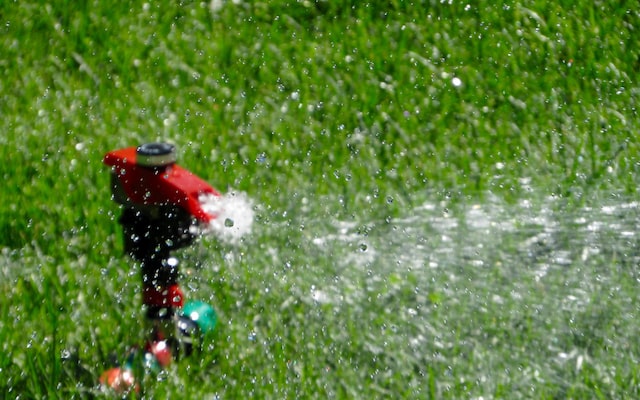During the first three weeks after you have planted your grass seeds, it is important to water them in order to keep them moist. This helps to maintain the moisture in the soil and ensures that the seeds will germinate. You should water your seedbed twice a day. If you are not using a sprinkler system, you can use a garden hose. However, it is important to make sure you don’t overwater the area. Watering too much will not help your grass grow, and it can even kill your seedlings.
The amount of water you need to give your new grass seed will depend on the type of grass seed you have, as well as the climate of your area. For example, Kentucky Bluegrass and Bermudagrass both require about 1 to 2 inches of water per week during the active season. In addition, you can check real-time weather reports to see if you will need to water more or less often.

Photo by Anthony Lee on Unsplash
Whether you’re trying to water new grass seed or your existing lawn, you will need to take the time to find the best watering schedule. There is no one-size-fits-all watering schedule, so you’ll need to experiment with different watering methods to find the right combination. To start, you’ll want to measure the amount of water that penetrates the top two inches of the soil. Once you’ve determined this number, you’ll know the optimal watering time.
Ideally, you should water in the morning and in the evening. Watering in the early morning helps to conserve water and allows it to penetrate the soil, whereas watering in the evening can lead to fungal growth. Also, watering at night can reduce the amount of sunlight that your seeds are exposed to. Using a timer can help you water your lawn at the appropriate time of day.
After you’ve given your grass seeds enough water to germinate, you will need to start to watch them closely. Ideally, you’ll want to water them about every ten minutes for the next five to ten days. When the sprouts have grown into single blades, you can switch to a once-a-day watering schedule.

Photo by Steve DiMatteo on Unsplash
Before you begin watering your grass, you should rake the soil. This will loosen the soil and remove any stones or debris. Next, you’ll need to spread your grass seed over the bare soil. Make sure to never lay your seed over any other debris. It’s also a good idea to use a straw mulch to protect your grass from evaporation.
After you have watered your seed, you should continue to water it until it reaches about an inch in height. Depending on your specific climate, this may only take a couple of days, or it may take several weeks. Once the seed reaches an inch in height, it’s time to stop watering.
Watering your grass can be tricky, as there are many variables that affect the length of time it takes for your new grass to grow. Your climate, the type of grass you’ve planted, the soil conditions, and the sprinkler set-up will all play a role in determining the optimal watering schedule for your seeds.
